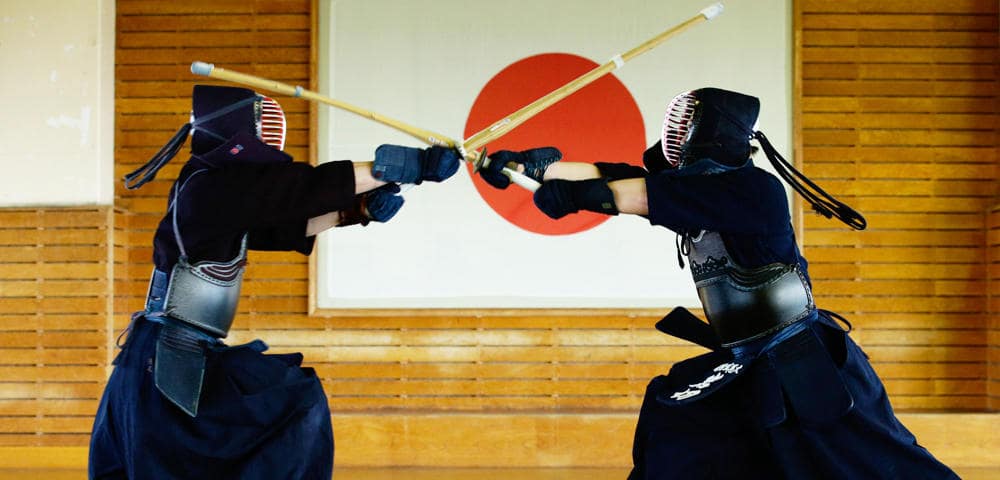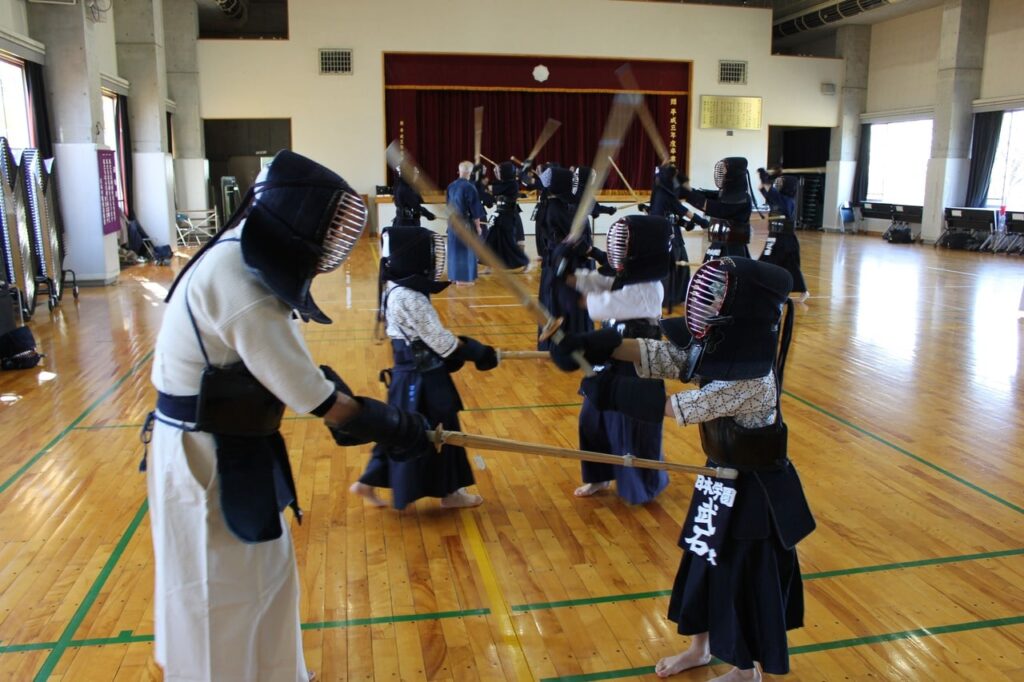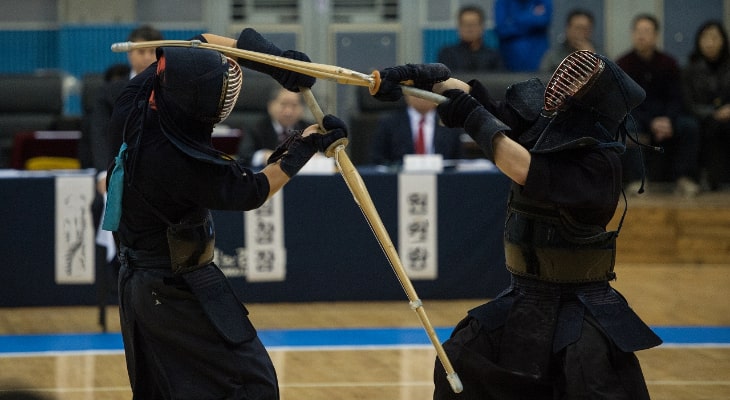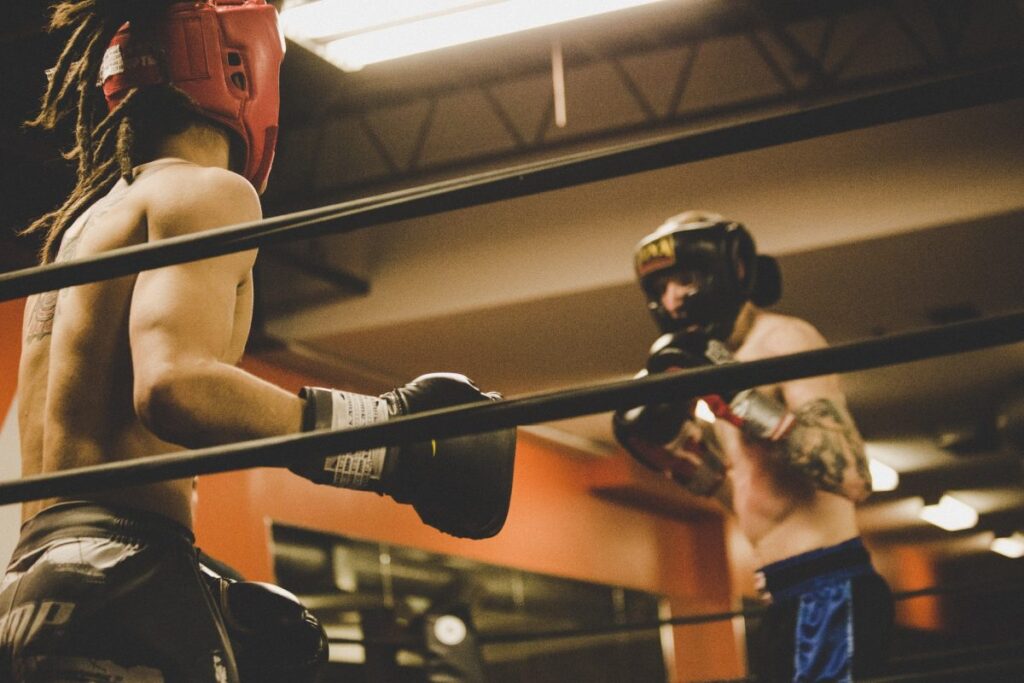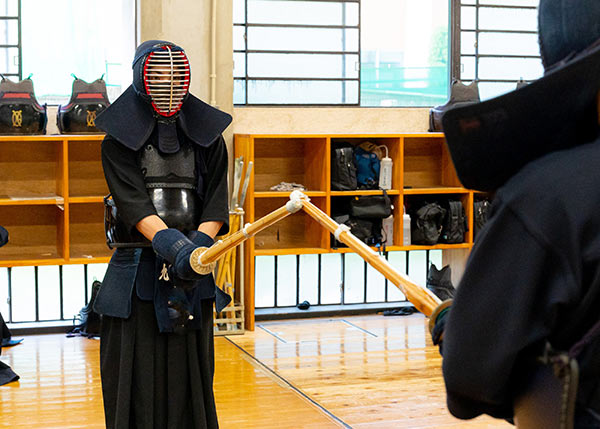
Footwork in Kendo is more than just a means of transportation.
It is a fundamental element for improving technical precision and ensuring tactical advantage during matches.
This article focuses on the types of kendo footwork and their technical details, and provides a concrete guide for beginners and advanced players alike to understand and hone their techniques.
We will explain the unique characteristics and application situations of each type of footwork, and cover a wide range of ways to use them in actual combat.
Improving your footwork is directly linked to improving your kendo skills, so by mastering this technique you will be able to acquire higher-level kendo techniques.
目次
- 1 Introduction: The importance of footwork in Kendo
- 2 Basic techniques of footwork in Kendo
- 3 Types of footwork in Kendo and their characteristics
- 4 Training methods to improve footwork
- 5 Applied footwork techniques in matches
- 6 Common footwork mistakes and how to correct them
- 7 Summary and advice for continuous improvement of footwork
Introduction: The importance of footwork in Kendo
In Kendo, footwork is not just a means of movement, but a fundamental element for achieving technical precision, speed, and tactical advantage.
The success or failure of Kendo techniques and matches is highly dependent on proper footwork.
The meaning of footwork in Kendo and its basic concept
Kendo’s footwork helps maintain balance during attack and defense, which helps stabilize the body and allows for more accurate and swift techniques.
Correct footwork allows players to effectively manage distance from their opponents and provides the basis for strategic positioning and timing adjustments.
Kendo also emphasizes the principle of “one step, one sword,” requiring that each step be coordinated with the sword’s blow.
By following this principle, players will be able to better match their movements and sword techniques, making attacks more efficient and effective.
In this section, we will explain in detail the footwork techniques of kendo, from basics to advanced techniques, and see how they contribute to improving the overall technique of kendo.
In the next section, we will delve deeper into the basic techniques of kendo footwork.

Basic techniques of footwork in Kendo
Correct footwork technique in Kendo is essential for effective technique execution and defense, as well as for maintaining overall balance.
This section provides a detailed explanation of the correct posture and basic foot movements required in Kendo.
Correct posture and how to move your feet
The basic posture of Kendo must have both stability and ease of movement.
Proper posture begins with a straight back and a slight bend in the knees.
This position prepares you for quick movement and supports your body so you can attack or defend at any time.
Place your feet slightly wider than shoulder-width apart, with your front feet facing forward and your back feet at a slight angle.
This foot position distributes your weight evenly and allows you to move back and forth smoothly.
The basic way of walking is called “suriashi”.
Suriashi is a technique that allows you to quietly and quickly change position while keeping the soles of your feet in close contact with the floor, allowing you to move without the other party hearing any noise or vibration.
When moving forward, gently slide your front legs forward, then pull your back legs closer together.
When backing up, reverse this motion and always maintain a consistent distance between your feet.
Introduction to basic footwork techniques
In Kendo, there are several basic footwork techniques. The most basic ones are:
- Moving forward (front foot slither) : Close the distance by lightly sliding the front foot forward and then quickly pulling the back foot.
- Retreat (hind foot slither) : Open the distance by sliding the back foot back and then pulling the front foot closer.
- Lateral movement (yokoashi suriashi) : Move sideways by sliding one foot to the side and quickly pulling the other foot closer.
By mastering these techniques, the execution of various techniques and tactics in Kendo will become more precise and effective.
In the following sections, we will explain in detail the types of footwork and their applications based on these basic techniques.

Types of footwork in Kendo and their characteristics
Footwork in Kendo greatly affects the accuracy and timing of techniques, so it is important to understand its types and characteristics.
Here we will discuss the main footwork techniques used in Kendo and how to make effective choices in each situation.
Technical explanation of each footwork
-
Okiashi :
- Characteristics : Aggressive forward movement, with the front legs quickly moving forward and the hind legs following.
- Advantage : Can instantly close the distance, increasing attack opportunities.
-
Hikiashi :
- Characteristics : Mainly means defensive retreat, with the hind legs pulling back while the front legs follow.
- Advantages : Allows you to keep your distance while avoiding the opponent’s attacks.
-
Conversion foot (epileptic foot) :
- Characteristics : Changes direction by quickly swapping the positions of the front and hind legs.
- Advantages : By changing the direction of the opponent’s attack, you create a chance for a counterattack.
-
Jumping foot :
- Characteristics : Jumping movement that uses both feet at the same time to close the distance at once.
- Advantages : Allows you to attack quickly from unexpected angles, surprising your opponent.
Effective footwork selection and situational judgment
In Kendo, the choice of footwork determines the success of a tactic.
When attacking, they often actively close the distance by using oki-ashi or jumping foot, but in defensive situations they use hiki-ashi or switching foot to effectively adjust their positioning.
When assessing a situation, it is important to constantly observe your opponent’s movements and the flow of the match, and choose the most appropriate footwork.
Kendo’s footwork is not just a movement technique, but functions as a tactical element of offense and defense.
In the next section, we will introduce training methods to further improve these footworks.

Training methods to improve footwork
Improving footwork in Kendo is extremely important, as it is directly related to improving technique and developing effective tactics.
This section provides specific exercises to improve footwork that can be incorporated into your daily practice, as well as improvements tailored to each individual player.
Exercises to improve footwork during daily practice
- Speed drill :
- Repeat the drill by moving quickly forward and backward over short distances. This increases the speed and agility of your footwork.
- Balance exercise :
- Train by standing on one leg and performing various movements with the other leg. This will help stabilize your legs and strengthen your core.
- Practice changing direction :
- Perform drills that involve changing body direction to strengthen transition foot technique. Sudden changes in direction can be made smoothly.
- Agility drills with obstacles :
- Place cones and obstacles and move while avoiding them. This will help you learn how to move your feet according to the situation.
Improvements in footwork for each player
Each player has their own strengths and weaknesses in their footwork. It is important to pay attention to and improve the following points:
- Personal body shape and flexibility :
- Depending on the athlete’s body type and flexibility, certain footwork may be difficult. Considering these physical characteristics, it is effective to incorporate individual stretching and muscle training.
- Technical quirks and errors :
- During practice, instructors and video analysis identify the players’ own footwork habits and mistakes, and consciously correct them.
- Fatigue and recovery :
- By understanding an athlete’s level of fatigue and ensuring appropriate rest and recovery time, you can maximize the effectiveness of your training.
By focusing on these training methods and individual improvements, it is possible to significantly improve the quality of your footwork in Kendo.
In the next section, we will explain in detail the application techniques of footwork in competitions.
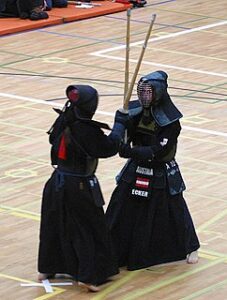
Applied footwork techniques in matches
In a Kendo match, footwork is used not only for movement, but also as a means of controlling the timing of attacks and defenses and applying psychological pressure on the opponent.
We will introduce techniques and strategies for effectively utilizing footwork in matches.
Application of footwork useful in actual matches
-
Control of distance :
- During a match, you can create attacking opportunities by actively adjusting your distance. It is effective to use oki-ashi to quickly close the distance, and then use hiki-ashi to quickly retreat while observing the opponent’s reaction.
-
Feint action :
- By using small changes in footwork to feint, you can throw your opponent off balance. For example, by pretending to take a slight step forward and then immediately retreating, you can provoke an unnecessary reaction from the other person.
-
Attack coordination :
- When attacking, they use their footwork to create a rhythm and develop cooperative plays to break through the opponent’s defense. It is effective to suddenly close the distance using a jumping foot or to suddenly change direction using a switching foot.
Footwork strategies tailored to your opponent
-
Read your opponent’s movements :
- Analyze your opponent’s characteristics in advance and plan your footwork to match their movements. For example, when dealing with an aggressive opponent, use a lot of defensive moves to fatigue the opponent.
-
Psychological pressure :
- By intentionally making your movements look bigger, you can put pressure on your opponent. This draws your opponent’s attention to your footwork and helps hide your actual offensive intent.
-
Flexibility depending on the situation :
- It is important to change the speed and pattern of your footwork as the match progresses. If you start to feel tired, slow down and confuse your opponent with surprising movements.
Mastering these applied techniques and strategies will help you win more matches in Kendo.
The next section details common footwork mistakes and how to correct them.
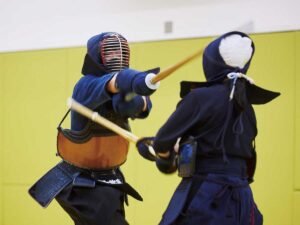
Common footwork mistakes and how to correct them
Beginners who are just beginning to learn Kendo often have difficulty mastering the correct footwork.
Here we will introduce footwork mistakes that beginners often make and how to efficiently correct them.
Footwork mistakes that beginners often make
-
Unstable center of gravity :
- Beginners often have a high center of gravity and are prone to losing balance during footwork. This makes movement unstable and reduces the effectiveness of attacks and defenses.
-
Excessive strain :
- Too much strain often causes the legs to move stiffly, making the movements slow and predictable.
-
Wrong foot order :
- If you do not move your feet in the correct order, you may not be able to move forward or retreat smoothly, making it difficult to perform effective techniques.
Efficient remediation approach
-
Relearning the basics :
- It is important to practice correct posture and basic foot movements (such as slithering) and gradually progress to more complex movements. By mastering these basics, you will acquire a stable center of gravity and flexible movement.
-
Relaxation exercises :
- By consciously relaxing your body during practice, you can avoid over-straining. By practicing in a relaxed state, you can develop natural and fluid footwork.
-
Use of video analysis :
- By taking a video of your footwork and looking back at it, you can specifically identify mistakes and areas for improvement. It is also very effective to receive feedback from your instructors and seniors.
-
Drills and repetitions :
- By repeatedly practicing correct foot movements, you effectively work on muscle memory and correct mistakes. Regularly performing drills that focus on specific movements will improve your technique.
By properly practicing these modification methods, even beginners can gradually improve their footwork techniques and improve their overall Kendo performance.
In the next section, we will review the importance of practicing footwork and provide advice on continued efforts to improve.
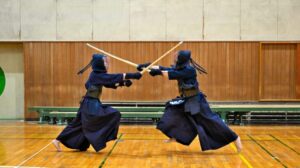
Summary and advice for continuous improvement of footwork
In Kendo, skilled footwork is essential for technical precision, tactical advantage, and overall performance improvement.
In this section, we will reaffirm the importance of footwork practice and recommend continued efforts to improve your Kendo techniques.
Reconfirming the importance of practicing footwork
Footwork is one of the basics of Kendo, and all techniques depend on it.
Accurate footwork not only increases accuracy in attacks, but also provides the ability to react quickly when defending.
Proper footwork also helps reduce physical exhaustion and maintain peak performance even during long matches.
Therefore, honing your footwork skills through daily practice is an absolutely essential element in mastering Kendo.
Recommendation of continuous efforts for improvement
-
Regular basic practice :
- It’s important to incorporate basic footwork exercises into your daily routine. Starting with the basics and gradually progressing to more advanced techniques will improve your overall skills.
-
Leverage video analytics :
- Regularly analyze videos of your practice and matches to find areas to improve your footwork. This allows you to objectively evaluate your progress and make specific corrections.
-
Proactively get feedback :
- Actively seeking feedback from coaches and senior swordsmen and consciously addressing the points raised will lead to growth.
-
Introducing cross-training :
- Incorporating other sports and fitness activities can improve your flexibility, strength, and overall athletic performance, which can help improve your footwork.
Technical improvement in Kendo is not achieved overnight, but with continued commitment to footwork practice, significant progress can be made.
The path of Kendo is long and sometimes difficult, but if you persevere, you can expect spiritual growth as well as technical sophistication.
